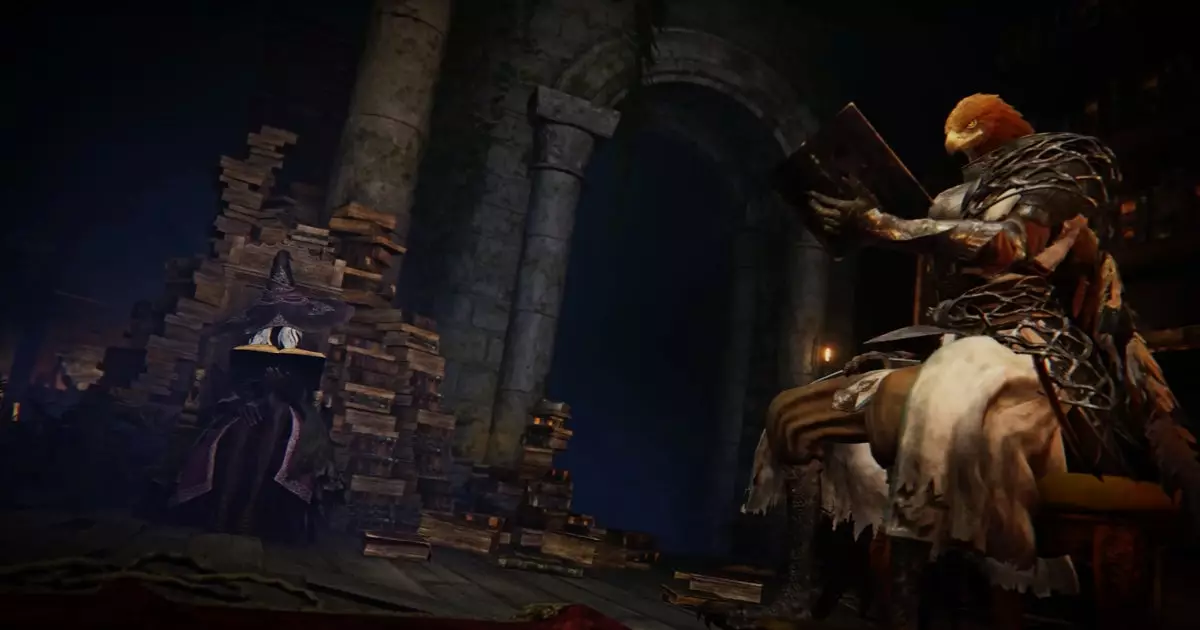In the sprawling universe of “Elden Ring,” every character and monster is laden with significance, swelling the intrigue around their design and lore. Recently, the inquiry into Nightreign’s Guardian—who commands a unique bird-like form—has sparked heated discussions amongst diligent players and dedicated modding communities. The contemplation of whether a human face lies hidden within the Guardian’s avian exterior presents a striking commentary on identity as it relates to character design in video games. With modder Zullie The Witch taking on the role of a digital detective, the findings in her recent video may offer profound insights into this artistic choice.
The expectation of finding a human face hidden beneath layers of feathers seemed plausible in a universe where duality and transformation underpin character narratives. In classic FromSoftware fashion, players continuously eye every detail, searching for hidden stories or easter eggs. However, Zullie’s investigation has clarified this confusion, stating that the Guardian is devoid of a human visage, contrary to speculation. This revelation not only unseals a narrative riddle but highlights a broader theme: the identities constructed through aesthetics in gaming.
Deconstructing the Guardian’s Role
The Guardian serves as a pivotal character within Nightreign, wielding a halberd and leading the Pinionfolk. Within this context, his design diverges from conventional archetypes, blending avian features with a martial prowess that resonates with the captivating motifs present in the broader FromSoftware oeuvre. Players may ask themselves—does a creature that appears fantastical, combining the bird and human elements, signify a closer connection to humanity than initially perceived? Here, the Guardian embodies a new kind of identity that transcends mere appearances.
Zullie’s findings reveal a significant departure from the expected structure of character design, suggesting that the focus in Nightreign shifts away from the traditional player character archetype. Instead, the game introduces a system where characters no longer rely heavily on facial data—the intricate elements foundational in titles like “Elden Ring.” For passionate modders like Zullie, the lack of conventional facedata not only acknowledges a different approach to character realization but also opens the door for deeper exploration into how identity is portrayed through art and design.
The Mystery of Wylder: Unveiling Another Layer
Though Zullie’s exploration answered many questions, it also left one major character shrouded in ambiguity: Wylder. Stripped of armor, Wylder has been unveiled as a faceless silhouette—an enigmatic figure that plays into the thematic question of identity through anonymity. The absence of a distinct face for Wylder raises multifaceted discussions about what it means to be “seen” in a narrative context. Without a traditional face, does Wylder symbolize the universal struggles of the gamer or represent the facelessness often found in multiplayer experiences?
Commentary surrounding this character points to a broader phenomenon in gaming culture, where players unite under shared experiences, often identifying with faceless avatars. The humorous references to Wylder as “the true John from all FromSoftware games” offer a critical reflection on the narratives surrounding player identity in video games.
A Community Engaged in the Discovery
Zullie’s findings have ignited discourse among fans, with many taking to forums and social media platforms to analyze the implications of the video. The active involvement of this community highlights the relationship between game design and player engagement. As players dissect each character, searching for deeper meanings, they also construct a shared narrative—a community built around collective discovery and interpretation.
For those yet to experience Nightreign, Zullie’s thorough analysis illuminates the intricate framework within which these characters operate, setting the stage for exciting gameplay and narrative exploration. Furthermore, the anticipation surrounding forthcoming content from FromSoftware continues to stir excitement, ensuring that this dialogue surrounding character identity will not simply remain relevant but will evolve with the game itself.
Through the lens of Nightreign, we witness an exploration of identity that defies conventional expectations, prompting a re-examination of how we define characters within digital environments. Whether through bird-like guardians or faceless avatars, the conversation surrounding identity continues to expand, inviting even more scrutiny as fans delve deeper into the mythos crafted by FromSoftware.


Leave a Reply